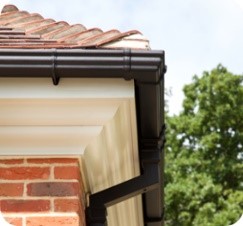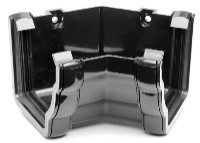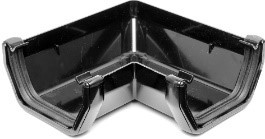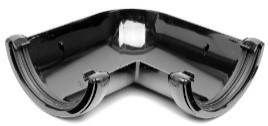Selecting the right guttering for YOUR project
May 07, 2019

Flow calculation:
1. Establish the rainfall frequency
How to do this:
Within the British Standard BS EN 12056-3:2000, you’ll find a comprehensive selection of maps highlighting the rainfall intensity across the UK.
2. Calculate the effective roof area
How to do this:
Roof height/2 + Roof section width x Roof Eave length = Y
3. Calculate flow:
How to do this:
A simple calculation of Y x Rainfall frequency (BS Guide) will provide the “total rainfall” figure that will help guide your guttering solution choice
For further reference refer to BS 12056-3:2000 “Roof Drainage Layout and Calculation” or click here for an automatic flow calculation from FloPlast.
Positioning of current outlets:

The roof angle itself will also help determine the efficiency of a guttering system; with angles in eaves guttering estimated to reduce capacity by up to 15%. Another common issue comes with roof angles positioned as low as 10 degrees, where a slower flow can cause water build up in the gutters upstream.
Material: PVCu Guttering:
As an inexpensive, easily accessible style, PVCu guttering a modern construction solution for a wide range of building projects. With most suppliers’ offering a 20-year (minimum) guarantee, PVCu provides a range of great benefits without breaking the bank
Benefits:
- Lightweight for ease of use, and fast installation.
- Corrosion resistant
- Stronger flow rates thanks to internal bore
- Minimal maintenance required
- Ensures a contemporary, clean aesthetic
- Highly versatile, making it suitable for domestic, residential and commercial structures.
Comparatively, PVCu is considerably cheaper than most alternatives both in terms of material cost and installation and requires significantly less ongoing maintenance. Whilst it may not have quite the longevity of cast iron or wooden alternatives, it’s flexibility, weather resistant properties and affordable price tag give it the edge for many.
Gutter style:
Decisions around gutter style will predominantly be determined based on flow calculation, however design is often also influenced by building style.
Common profile styles:

Ogee: |
|

Square: |
|

Half-round: |
To support constructions with steep roofs or large surface areas, deep flow styles are also a practical solution for high flow areas.
Resource – Building Regulations:
For more information, refer to the relevant governing body legislation & guidance below:
1. Building Regulations Approved Document H3: 2015 – Rainwater Drainage (Document H3)
Guidelines for design & installation.
2. BSEN12056-3:2000
Guidelines for rain flow calculations.
Let us support you:

high quality, guttering solutions.
Alongside our standard guttering portfolio, we also offer cast iron, and steel solutions. For more on our standard range or to discuss your requirements simply call our team on 033 33 21 00 13.